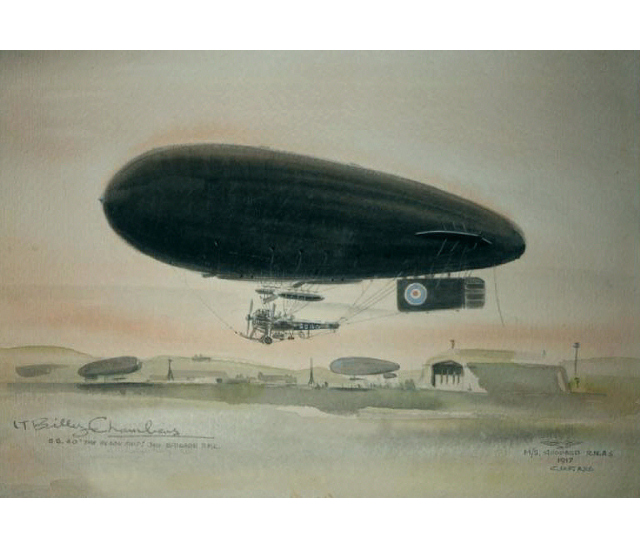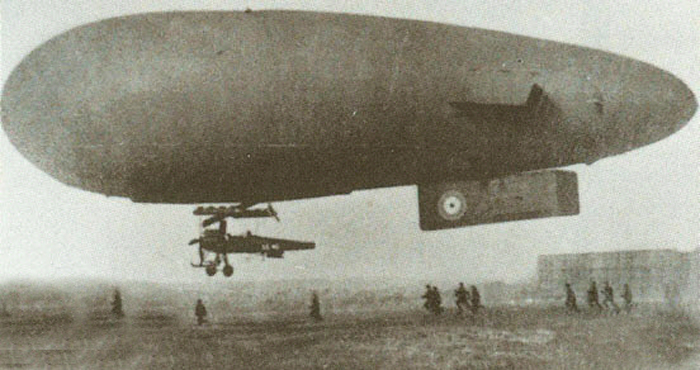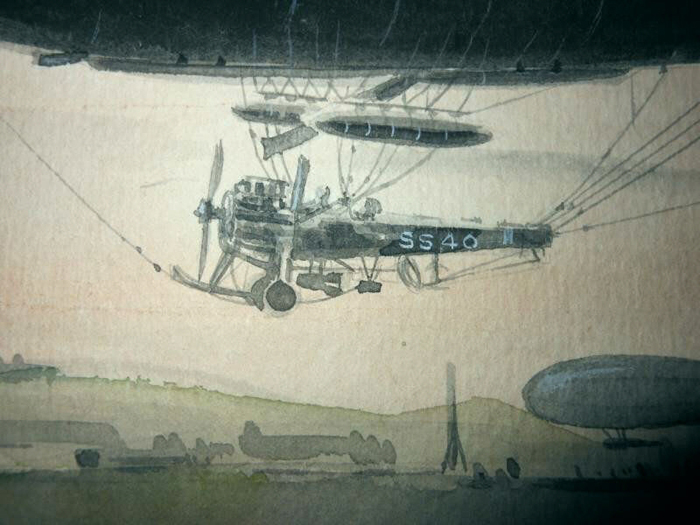During the First World War, there were numerous attempts to get past the trenches on the Western Front. One of these led to the creation, in East Sussex, of possibly the first ever stealth aircraft.
In the Spring of 1916 the War Office looked into the possibility of using a ‘stealth’ airship specially adapted for covert night operations, reconnaissance and dropping men behind enemy lines. From March 1916 two young pilots, using SS13 at the Polegate Royal Naval Airship Station, Willingdon, carried out experiments with night flying. They were 20 year old Sub Lt. William Chambers and 19 year old RNAS midshipman Victor Goddard who went on to become Air Marshall Sir (Robert) Victor Goddard KCB, CBE, MA, RAF. a senior commander RAF in WW2
While these trials were being carried out at Willingdon, the fuselage of SS40 was being painted matte black at the RNAS Kingsnorth and together with a specially made black envelope it was delivered to the RNAS Polegate. Here in one of the hangers, in secrecy, the black mystery ship was built. The crew carried out modifications fitting a silencer to the engine and building a hand operated air blower to pump air into the ballonettes for keeping the balloon inflated whilst the ship drifted with engines cut. Special hoods were constructed to shield its landing lights. Only the few members of crew were allowed in the hanger and they named it ‘The Black Ship’.
One dark drizzly night at the end of June 1916 Staff Officers from the War Office, headed by a General, travelled to Willingdon to witness a night time demonstration. Billy Chambers piloted the ship for this first flight with Victor Goddard acting as navigator although both men were officially the joint pilots of this special vessel. It set off on the breezy moonless night circling around Eastbourne and the surrounding villages, returning after 40 minutes. This first flight was not without it’s problems as the rudder jammed and only by making a series of long loops, opening the throttle fully and immediately throttling back did they eventually arrive back at Polegate missing the landing party who had to dash after the ship to secure it.
None of this was realised by the observers, as she was indeed invisible and virtually silent. They were favourably impressed and so the ship was accepted for her secret mission with BEF in France. A few nights later, despite a protracted journey due to a broken oil pipe, Black Ship landed at Boubers-sur-Canche near Arras the home of Naval Airship Detachment No 4. Goddard and Chambers carried out test flights over enemy lines from 7 July for over a month coinciding with the start of the Battle of the Somme. On 13 August Lt C Robbins parachuted successfully into allied lines from 1,500 feet together with several baskets of homing pigeons.
The Black Ship returned to Kingsnorth to have a large gusset fitted the length of the envelope increasing the gas capacity to 8,300 cubic feet, enabling her to fly at higher altitudes. On returning to France night time missions were carried out behind enemy lines flying at 8,000 feet. The Black Ship operated covertly in France for the duration of the Battle of the Somme, twenty-one year old Sub Lt. Billy Chambers being mentioned in dispatches in General Haig‘s report on the Battle. No agents were ever dropped behind enemy lines and by 1917 our aeroplane pilots had gained mastery of the night time skies so superseding the airship for land warfare. It was a mystery that the Germans never shot her down although she was punctured a few times by our own riflemen who had taken pot shots at her thinking she was a Zeppelin. Our Army nicknamed her ‘Bertha the black Blimp’. The SS40 Black Ship, fitted with a standard silver envelope, left Kingsnorth in March 1917 to carry out service in the Mediterranean until finally being taken out of service at Mudros in October 1918.
This story was submitted by Rosalind Hodge, Archivist, Willingdon Parish Church










